
|
|
|
|
|
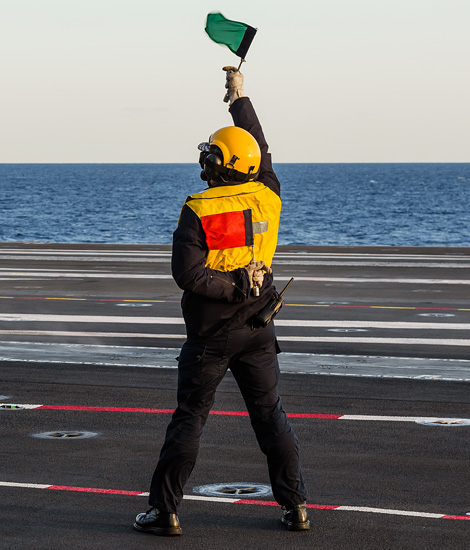
|
Deployment During Mission Chammal; Charles de Gaulle, March 25 & 26, 2019
Mission Clemenceau, part 2; Text and Photograph's: Alex van Noye & Joris van Boven
An important part of Mission Clemenceau was the deployment of aircraft in the fight against IS/ISIS/Daesh. The Charles de Gaulle was deployed in March 2019, to provide support from the sea during the French Mission Chammal against the terror caliphate. Bombing missions were carried out from the sea with Marine Rafales.
The commander of the Group Aérienne Embark (GAE, Carrier Air Wing) is Commander Charpentier. The Commander is in charge of the Air Wing aboard the aircraft carrier Charles de Gaulle (CdG). Charpentier himself made a total of 2800 flying hours on more than 41 different aircraft types. This is a very remarkable count, but that is because the Commander has been a test pilot. "I have flown more than 1000 hours on the mighty Marine Rafale". This Carrier Air Wing consists of two squadrons with combat aircraft (20 Marine Rafales), a surveillance squadron (2 E-2C Hawkeye), a SAR squadron (2 SA365 Dauphin helicopters) and an anti-submarine squadron detachment (1 NH90 NFH Caiman helicopter). Under Charpentier, more than 500 employees of the French navy work aboard the CdG. According to the Commander, this crew consists of sailors such as fighter pilots, helicopter crews and technicians. In short, all personnel needed to make the planes and helicopters to fly aboard the CdG report to Charpentier. The Group Aérienne Embark (Carrier Air Wing) is capable of carrying out autonomous combined attacks against air, sea and ground targets from the aircraft carrier. In order to qualify for Mission Clemenceau with his Group Aérienne Embark, a lot of training was performed in preparation. In the fall and winter of 2018, we had to pass many qualification tests. The highlight was the FANAL exercise in February. During this exercise, the French Navy trained together with the Spanish Navy and the US Navy. For example, the Carrier Strike Group included the Spanish frigate Cristobal Colon and the American destroyer USS Donald Cook during this exercise, Charpentier said.
Charpentier indicates that he will remain on board the CdG during the entire mission. "I am always on board of the Charles de Gaulle when airplanes are on board, so this year I can spend more than six months at sea." In addition to all aircraft and
|
|
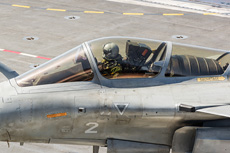
|
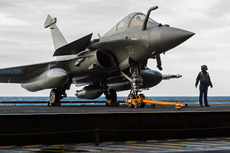
|
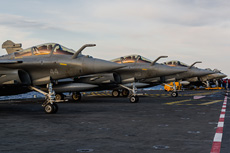
|
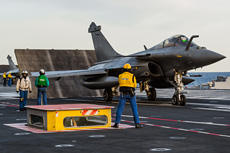
|
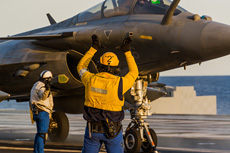
|
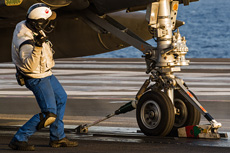
|
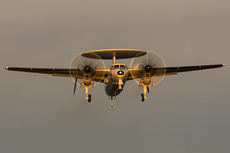
|
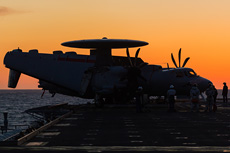
|
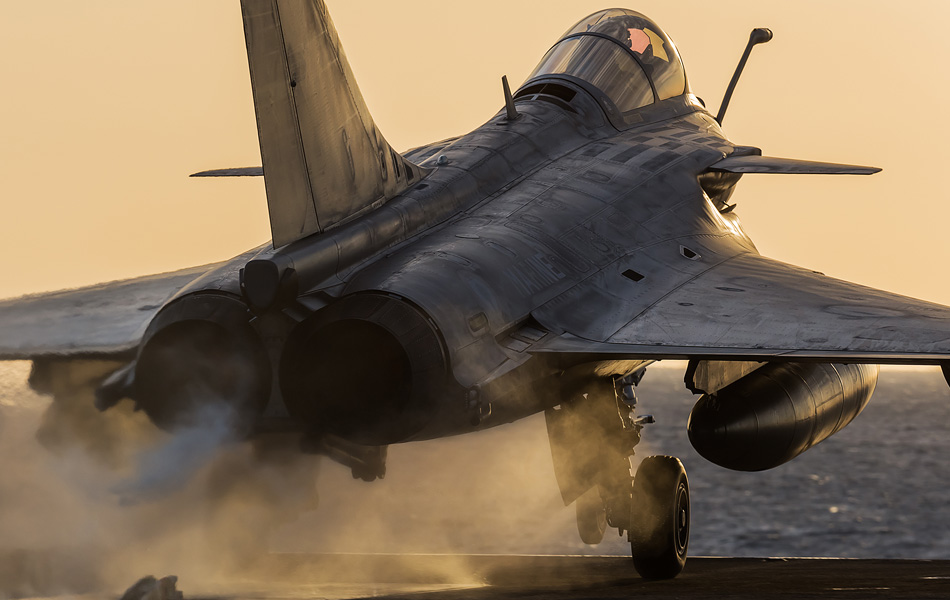
|
helicopters, Charpentier also has the lead over more than thirty Rafale pilots, three Hawkeye crews, four Dauphin crews and a Caiman crew during the entire cruise. The commander briefly states what his expectations are during Mission Clemenceau. During the mission a number of re-qualifications of the experienced pilots and the qualification of the youngest pilots are achieved. "We also hope to be able to sustain a long and especially exhausting campaign against Daesh in which the caliphate is defeated". Another important objective is to control the maritime warfare domain, which is reinforced by all sensors and weapons from the Carrier Strike Group. Finally, the Commander points out that developing fertile interactions with allies and strong partners in the Mediterranean Sea, the Red Sea, the Indian Ocean and Southeast Asia is a primary goal of Mission Clemenceau. Charpentier: “The great thing about this implementation is the variety of sequences, starting with an operational phase with Operation Inherent Resolve followed by countless interactions all the way to Singapore. It is a real adventure in which the naval pilot has to adapt every day to new environments, new weather conditions and new competitors or partners. This is why I applied to the French Navy 23 years ago”.
During Mission Chammal, armed Rafales are deployed daily to attack ground targets from Daesh in Syria. According to Charpentier, the Rafales were deployed in various roles during the mission. The most common missions are typical CAS missions (Close Air Support), DCA missions (Defense Counter Air) and Recce missions (recon flights). During the CAS missions, Rafales are deployed to support troops on the ground with fire power from the air. During the DCA mission, the Rafales protect other aircraft such as other Rafales flying a CAS mission or a Hawkeye patrolling an area. During the Recce missions, pilots often take pictures from the air, according to the Commander. With this information a lot of Intel can be collected about movements in an area which will later play a role in other missions. The Rafales can be equipped for the different missions in different configurations. For reconnaissance of targets and areas, the recce aircraft are equipped with a Thales AREOS (Airborne Recce Observation System) reconnaissance pod. In addition to this pod, all Rafales attacking ground targets are equipped with the Thales Damocles targeting pod as standard.
According to Charpentier, preparation for a Chammal mission always starts one day before the actual deployment. The preparation is done by a team of two fighter pilots, an Intel officer and a petty officer according to the Commander. The very last preparation for a Chammal mission starts about three hours before the Rafales are launched with the catapult, Charpentier says. During this briefing, the pilots are briefed during the mass briefing for the entire team. A specific briefing will then take place during the element briefing for the specific Rafale team. Finally, people are briefed about the CSAR instructions. After this information session, the pilots are equipped and they walk to the Rafales which are already prepared by the deck personnel. Charpentier ensures that after the launch the combat aircraft are guided by the air traffic controllers to their target area. They will then check in at the TAC C2 in Iraq or Syria. The pilots will sometimes be in the air for more than six hours during such a mission. According to the Commander, they must regularly refuel in the air with German, American or British tankers. Also, flying is often difficult due to the harsh conditions in the desert such as thunderstorms and heavy turbulence. The aircraft are deployed in the target area if the coalition requires it. The Rafales regularly return fully loaded to the CdG if their deployment was not necessary at that time. Finally, Charpentier explained that a long debriefing takes place after the mission and that people needed rest afterwards for the next mission.
|
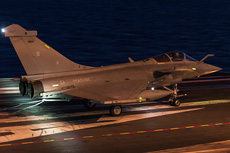
|
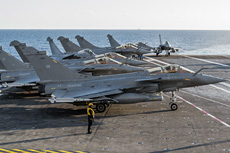
|
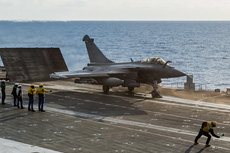
|
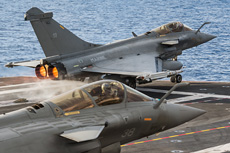
|
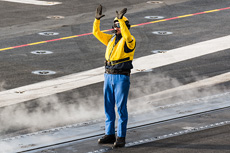
|
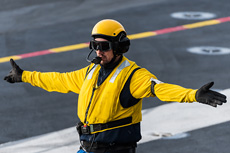
|
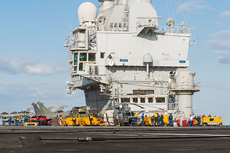
|
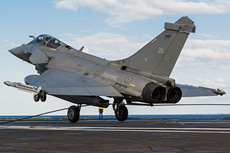
|
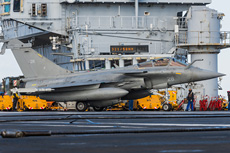
|
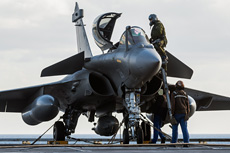
|
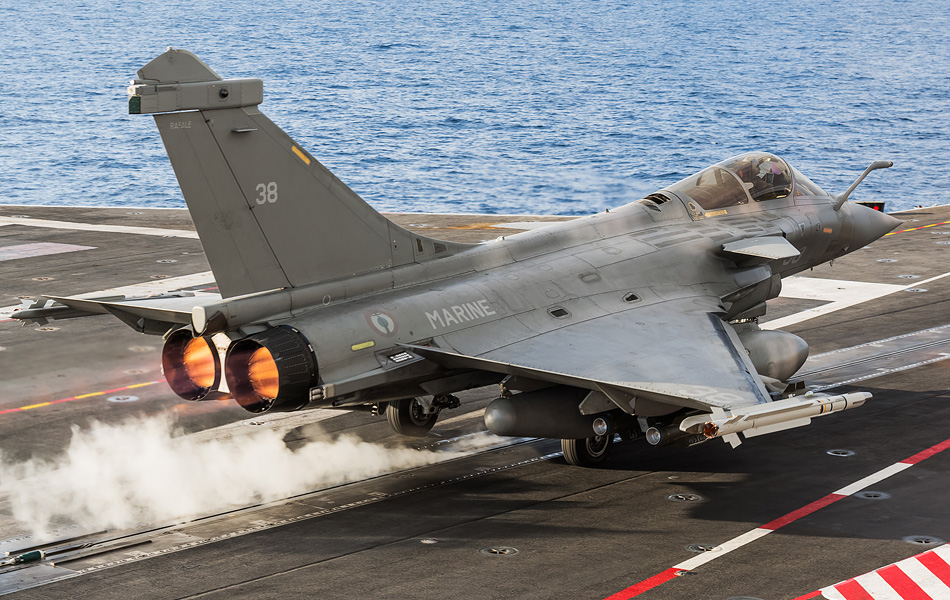
|
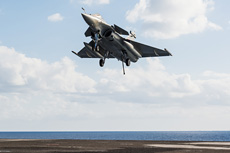
|
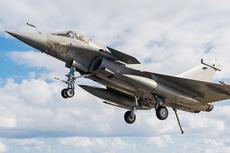
|
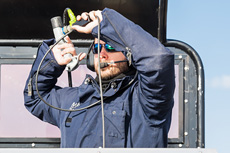
|
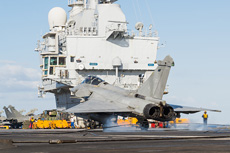
|
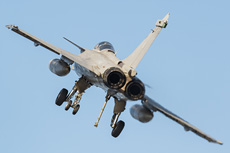
|
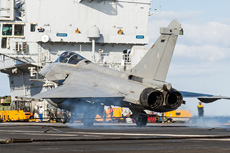
|
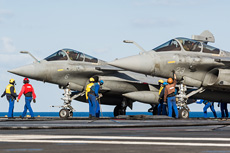
|
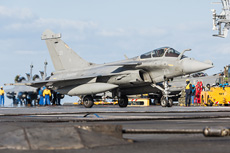
|
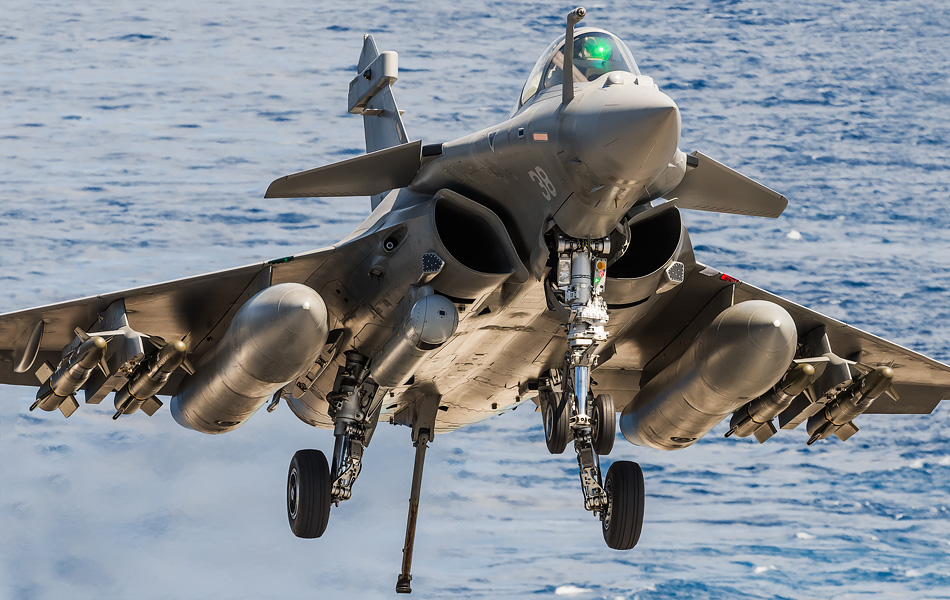
|
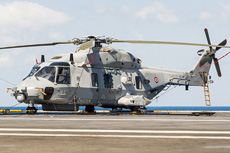
|
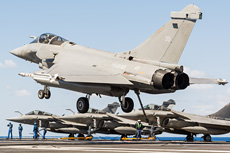
|
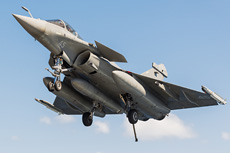
|
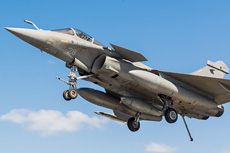
|
|
|

|







